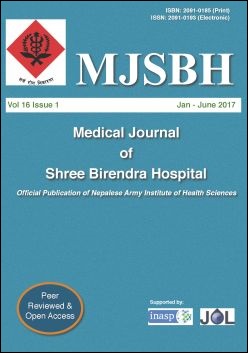Laparoscopic Ureterolithotomy: A Prospective Comparative Study
Keywords:
laparoscopy, stone, ureterAbstract
Introduction: With the developments of non invasive and minimally invasive technology in the management of urolithiasis, the choice of open surgery is rapidly decreasing. The optimal modality of stone management is governed by multiple factors like stone parameters, patient character, availability of technology and surgeon's skill. Open or laparoscopic ureterolithotomy can be used as primary treatment option for large, impacted ureteral stones of more than 1.5 cm or as an adjunct procedure in case of failed ESWL and attempted URS or PCNL.
Methods: This is a prospective comparative study to see the outcome of Trans-peritoneal Laparoscopy Ureterolithotomy (TPLU) with Open Ureterolithotomy (OU). Out of 42 patients 21 had undergone laparoscopic ureterolithotomy and same number had undergone open surgery over the period of two and half years. The variables evaluated were age, sex, stone character, operative time, Visual Analogue Scale (VAS) for pain, complications and hospital stay.
Results: The patient and disease characteristics in both groups were comparable. Mean operative time was 107.62 ± 32.84 mins in TPLU VS 65.48 ± 15.72 mins in OU group. Median hospital stay was 2.19 ± 1.78 days in TPLU VS 4.62 ± 1.53 days in OU group. The pain score is significantly low in TPLU than OU (p < 0.05).
Conclusion: Laparoscopic ureterolithotomy is a safe and feasible treatment option for the selected ureteric stone with comparable outcomes.
Downloads
Downloads
Published
How to Cite
Issue
Section
License
This license enables reusers to distribute, remix, adapt, and build upon the material in any medium or format for noncommercial purposes only, and only so long as attribution is given to the creator.




